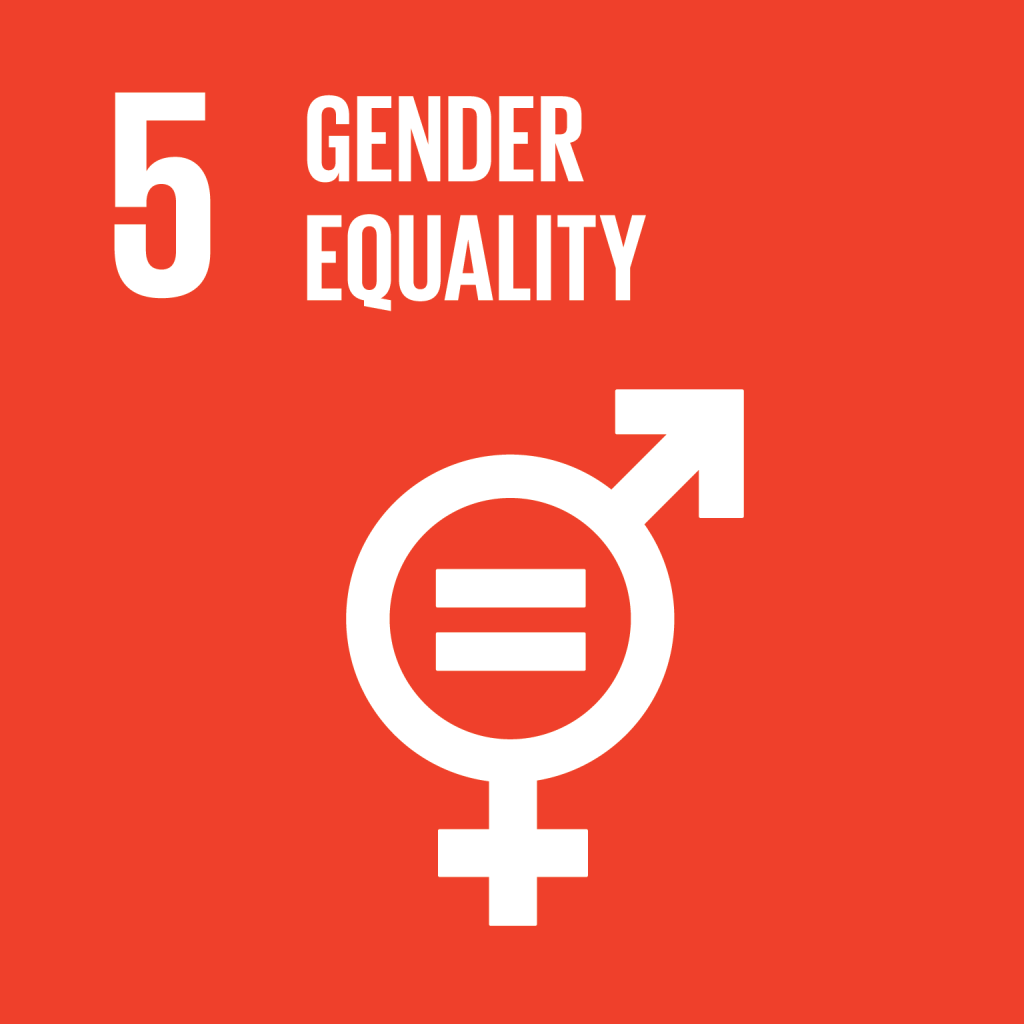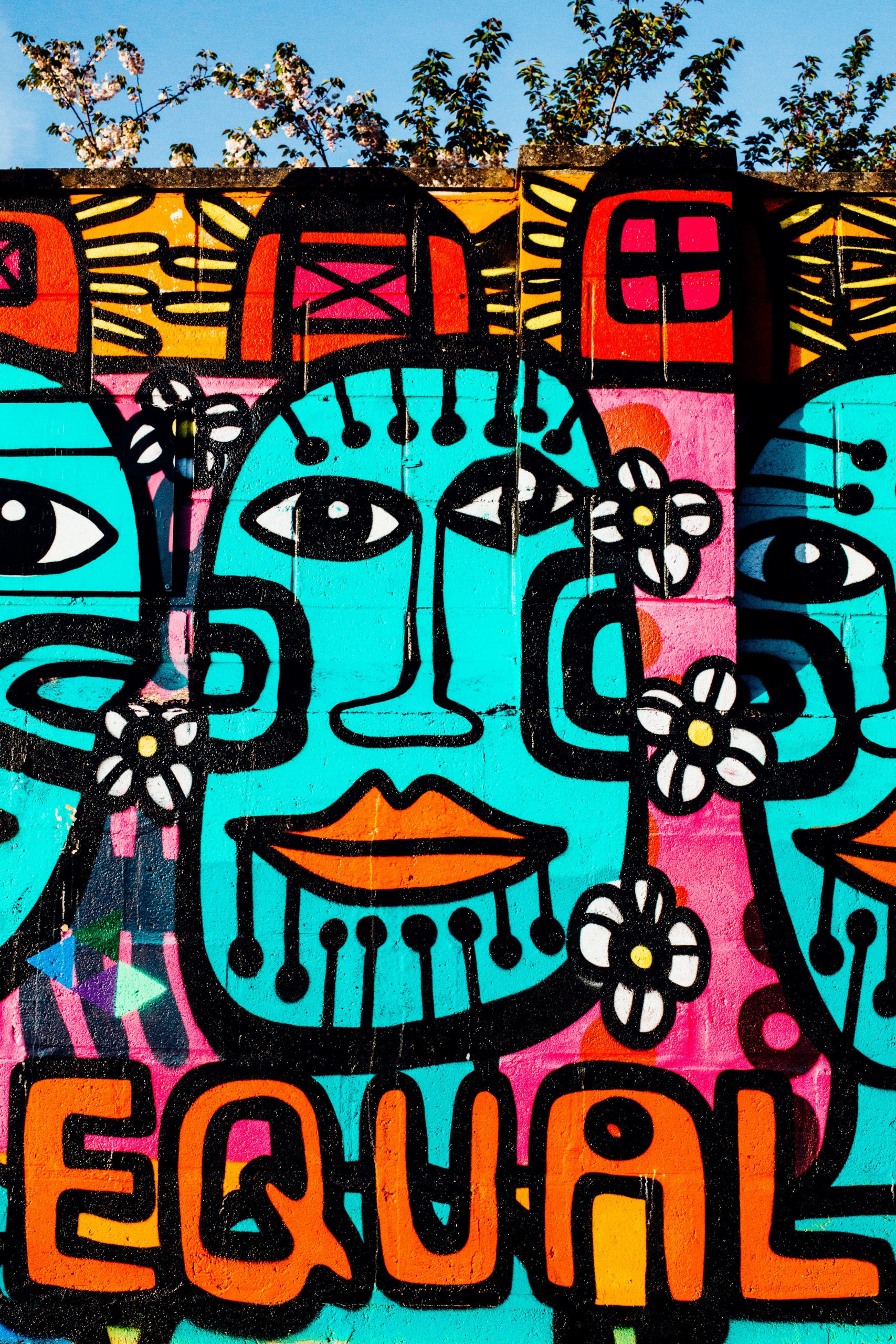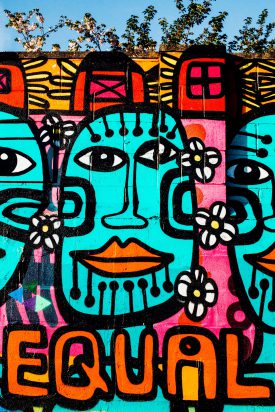Welcome to my fifth and final blog post in the series on gender, development, and information and communication technologies (ICTs). In the following post, topics from my previous blog posts are brought together and analysed with the help of academic literature and research to discuss how development practitioners can ensure that ICTs are implemented efficiently for the purpose of achieving gender equality.
In the following blog post, I am concerned with the implementation of technology in ICT4D projects and how development practitioners ensure that ICT serves the right purposes. Below I point out some relevant factors to consider when designing and implementing ICT4D projects for gender equality and illustrate my arguments with plenty of research that I have come across the last weeks while writing my blog posts.
From economic growth to equality
Even though gender was not included in development studies until the 1970s, nowadays, bridging the gender gap is often a development priority due to its perceived hindrance to wider societal change and assessing gender impacts is frequently a requirement for international aid (Gillard 2008).
Research on ICT4D can be considered to date back to the 1980s and since then, we have seen a large increase in interest in using technology for development projects in developing countries (Walsham 2017). Though, when formulating goals and trying to evaluate the impacts such ICTs have on individuals and communities, the focus tends to mainly be on economic growth and well-being. Less attention has been paid to their role in reducing inequality (Unwin 2017; Kleine 2010).
As we have seen throughout the last weeks, ICTs have the potential to provide individuals with much more than equal economic benefits. To truly understand the diversity of impacts ICT can have on development efforts and independence, we need a more people-centered and holistic view of human development. Many scholars, such as Kleine (2010), argue for including for example a person’s social and cultural aspirations, freedoms, and the possibility to make choices to live the life valued and wanted.
More research is still needed on the impacts and connection between ICT and gender and how technology can play a role in creating a more equal world for all (Walsham 2017; Oreglia et al. 2015).
Beyond access and ownership
As mentioned in my first blog post, access to and ownership of technology will not automatically lead to empowerment and changes in constraining gender structures. Despite this, we still see a focus on measuring the interrelated features, the ‘4A’s, of ICT4D: awareness, availability, accessibility, and affordability, i.e. people’s awareness of what can be done with ICTs, skills to use, access to and ability to afford the use of technology (Hussain et al 2018: 253).

For example, the overall aim of the Sustainable Development Goal 5 (SDG5) is to “achieve gender equality and empower all women and girls”, and ICT is viewed as playing an important part in this process as SDG5, target 5b seeks to “enhance the use of enabling technology, in particular information and communication technology, to promote the empowerment of women”. Looking at the tracker for goal 5, the results presented so far towards global gender equality measure success in the “proportion of individuals who own a mobile phone, by sex”.
Despite the importance of such numbers, measuring access does not tell us what ICTs are being used for. With their research in Afghanistan, Hussain and Amin (2018) emphasised how most women with access to ICT were highly controlled by their families. As male family members would regulate the content the women were allowed to access, technology ended up being used by the women mainly to fulfill their gender roles as mothers and wives. On a similar note, Moussa and Seraphim (2017) studied gender and ICTs in the United Arab Emirates and argued that even though most Emirati women use technology every day for education, work, or entertainment, they are still highly restricted by family and the surrounding society when it comes to expressing themselves freely online, and making lifechanging decisions. Thus, access to technology does not mean that people automatically have the possibility to challenge gender inequality or that societal structures are changing. Access and ownership are not end goals, but potential steppingstones towards social change (O’Donnell et al 2018; Walsham 2017).
Hussain et al (2018) suggest adding two ‘A’s to the ‘4A’s mentioned above, i.e. agency and ability. We need to know if the use of ICT leads to an expansion of what Naila Kabeer (2005:15) calls ‘transformative agency’, i.e. enables people to question, act upon, and challenge patriarchal power relations. Whereas measuring people’s access to ICT is a simple attempt to prove impacts from technology, then without taking into account people’s active agency and ability to challenge gender inequity, we do not know if someone can use technology for empowering purposes and actual change (Kleine 2010).
ICTs for multiple purposes
The increased use of technology is changing human communication. As development practitioners, it is important to keep in mind that ICTs are not neutral and not necessarily a force for good. Instead, the design and use by people determine whether they have positive or harmful effects (Unwin 2017).
Technology can for example be used by gender groups to share experiences and connect with others online, promote gender equality, and fight gender-based violence through awareness-raising and organising campaigns (Thakur 2018).
An initiative for women by five women of Middle Eastern background is HammamRadio, available both in Arabic and English. The traditional media the radio is combined with online podcasts to create a safe space for women to freely talk about among other mental health, gender norms, relationships, and politics. Another project also by women for women and using technology to combat discrimination is the online platform HarassMap. The initiative seeks to help women avoid sexual harassment on the streets in Egypt by encouraging people to anonymously report incidents via text messages, used to map events and location details on the public website.
Though, the last years have also shown us the darker side of digital technologies as ICTs too are used to harass, victimise, and target people online. Girls and women who can access the internet experience online harassment and violence more often than men and women of multiple identities e.g. belonging to an ethnic minority, the LBTQI community, or being indigenous run an increased risk of being targeted online. As discussed in my fourth post, Thakur (2018) argues that the fact that online interaction takes place at a distance and at times is anonymous can reduce people’s sense of empathy and encourage aggressive behaviour, while Hassan et al (2018) point out how easy access to social media on mobile devices can lead to instant reacting to emotions online.
Technology is not enough by itself
Some ICT4D approaches have been criticised for an over-centrality and fixation with the role technology play in development (Heeks 2010). Unwin (2017) emphasises that technology is not a silver bullet for achieving equality in the world and it does not have a power on its own to make a difference to people’s lives.
We still come across tech-optimism and the naïve assumption that specific development goals will naturally follow from greater access to ICTs (Sein et al. 2019), though there is an increased recognition within international development that providing infrastructure and technology is not enough to bring about wanted change (Buskens et al.).
Oreglia and Srinivasan (2015) demonstrate this with their study of an NGO-led project in a patriarchal village in south India, where women were trained as telecentre operators to support villagers’ using computers. Their research showed that the women gained increased status within the family and community due to their knowledge of using sophisticated technology and started to question gender norms and expectations in the family. Though, ideas simultaneously persisted about women’s behaviour and their roles in the family, reminding us that individual actions and implementation of ICTs take place within a broader system of norms and values. Despite the NGO’s effort to train the female operators, the women were still expected to prioritise the family over career and were accused by extended family and village residents of neglecting their husbands and children.
The research proves that wider social changes are needed too for the use of ICTs to potentially lead to equality and empowerment. This in accordance with Sein et al (2019) who argue that ICT has potential to contribute to change but should not be viewed as an end in itself.
Consideration of context
No ‘one-size-fits-all’ solution will work in all contexts. When technology is used in development projects, practitioners must try to foresee the obstacles and challenges for the specific context e.g. related to infrastructure, local culture, and traditions.
As mentioned in my second blog post, Semo and Frissa (2020) have been studying the mental health challenges during Covid-19 in Sub-Saharan Africa and argue for a solution that takes into consideration the particular context. The general use of mental health services in the region is low due to among other weak health care systems, great reliance on self-help and religious events, and prayers. Whereas digital mental health services are now widely used in the ‘global North’, they point out the great differences in internet usage within the region, e.g. 87% of Kenyans use the internet whereas only 6,3% of people in Chad do, and the gap between rural settings and urban settings when it comes to access and literacy. In the design and implementation of ICT4D projects, such challenges to access and use of online services but also cultural and social aspects must be taken into consideration for the most efficient result. In the specific case, they argue that a combination of web-based technologies with more traditional media such as TV and radio to communicate self-help measures, broadcast religious services, and share survivor experiences is the most ideal. In a different context, a different approach will be more suitable.
Shaping tech to fit different needs
ICTs are not neutral but socially constructed in particular environments by certain people for specific purposes (Heeks 2010). As pointed out in my third post, it is therefore important when planning and evaluating development projects and campaigns to ask questions such as: ICT by whom?, ICT for who? and ICT with whose interests in mind?
The tech industry is still dominated by men who design and develop most of the technology and tools available, meaning that ICTs are likely to be fitted to their needs and interests (O’Donnell & Sweetman 2018). It is crucial that women and marginalised gender groups are active participants in the development and shaping of ICTs to make sure that technology fits their needs and purposes.
With this aim in mind, the organisation AkiraChix was founded in Kenya to give girls from socio-economically disadvantaged backgrounds an opportunity to learn hands-on technical skills and be mentored towards careers in technology-related fields. The founders hope that the holistic approach of teaching girls and young women coding, graphic design, business planning, and mobile application development while mentoring them and strengthening their confidence can be the first step towards more women creators and leaders in the industry.
Even though a more diverse range of people making their way into the tech business does not necessarily lead to equal working conditions and mean that prejudices will disappear, then giving people the opportunity for a career in tech, providing them with practical skills and a support network is a beginning.
Inclusion of diverse voices
As Unwin (2017) emphasises, for the target group to benefit from ICT4D projects, development practitioners need to not work for people but with them when designing and implementing them. It is crucial that individuals and groups are listened to and that the ICT provided speaks to the needs of such people. Working for a greater gender balance and equality means that the targeted groups should participate in knowledge production online.
Research done by the global campaign Whose Knowledge? shows that despite about 75% of the online population coming from the Global South and 45% being women, most public knowledge on the internet is written by white men in Europe or North America. This means a limitation in the perspectives available online and is a hinderance for challenging biases. To strive for equality and inclusion, there must be a potential for more marginalised individuals and groups to contribute to the knowledge available online to broaden the sources on which the world’s knowledge is based.
One initiative working to include the voices of lesbian, gay, bisexual, transgender, intersex, queer, and asexual (LGBTIQA) persons in Bosnia and Herzegovina is Okvir. The organisation works among other with storytelling to give people the opportunity to with their own spoken or written words share and process their experiences of discrimination and accepting their identity while challenging prejudices.
Conclusion
The last weeks have been a journey into the world of ICT4D and gender equality and an encounter with many inspiring ICT projects proving that technology can both be used for positive and harmful purposes. In the field of ICT4D, technology should be viewed as a means and steppingstone with the potential to improve gender equality and social change rather than an end in itself. ICTs have the potential to be useful tools, but this requires among others that ICT4D projects move away from the fixation with economic growth, beyond a focus on access and ownership, and are context-specific, inclusive, and realistic about the role tech can play.
Final thoughts on the blog
I have profoundly enjoyed the possibility to dive into a topic of interest, i.e. gender equality, and learn more about ICT and new media for development and social change. I soon realised the endless number of different topics I could write about concerning ICT4D and gender, so my biggest challenge was to limit my scope and the length of my blog posts.
It turned out to be a lot more time-consuming setting up a blog and producing weekly content than I expected, but I’ve also learnt more from this course than many other university courses. I now have more hands-on experience with WordPress blogging and SEO, even though I would have liked to spend more time on designing and optimising the blog, and I’ve come to appreciate group work through this rewarding and fun experience of creating a blog together.
In my opinion, not many university courses give students the possibility to experiment with a writing style different from the more formal, academic style, freely create a product and encourage the inclusion of personal thoughts and experiences, so I’ve really appreciated this. Though, it also surprised me how challenging I found changing my writing style and how rewarding it instead was to write creatively in a more relaxed setting about interesting topics.
I’m sure that strengthening my writing skills, improving my blogging and social media skills, and learning more about ICTs will benefit my future work. This has even given me some confidence to take up blogging again and use my knowledge and skills to do it a little better this time.
[word count: 2497]
References
Buskens, I. & Webb, A. (2009) African Women & ICTs: Investigating Technology, Gender and Empowerment. Zed Books Ltd, London.
Gillard, H., Howcroft, D., Mitev, N. & Richardson, H. (2008) “Missing Women”: Gender, ICTs, and the Shaping of the Global Economy. Information technology for Development, Vol 14(4), 262-279.
Hassan, B., Unwin, T. & Gardezi, A. (2018) Understanding the Darker Side of ICTs: Gender, Sexual Harassment, and Mobile Devices in Pakistan. Information Technologies & International Development. Vol. 14, 1-17.
Heeks, R. (2017): Information and Communication Technology for Development (ICT4D). Abingdon: Routledge.
Hussain, F. & Amin, S. (2018) ‘I don’t care about their reactions’: agency and ICTs in women’s empowerment in Afghanistan. Gender & Development. Vol 26 (2), 249-265.
Kabeer, N. (2005). Gender equality and women’s empowerment: A critical analysis of the third millennium development goal. Gender & Development, Vol 13(1), 13–24.
Kleine, D. (2010) ICT4WHAT?-Using the choice framework to operationalise the capability approach to development. Journal of International Development, Vol 22(5), 674–692.
Moussa, M. B. & Seraphim, J. (2017) Digital gender divides and e-empowerment in the UAE: A critical perspective. International Journal of Education and Development using Information and Communication Technology. Vol. 13 (3), 145-161.
O’Donnell, A. & Sweetman, C. (2018) Introduction: Gender, Development and ICTs. Gender & Development. Vol 26(2), 217-229.
Oreglia, E. & Srinivasan, J. (2015) ICT, Intermediaries, and the Transformation of Gendered Power Structures. MIS Quarterly, Vol 39, 1-8.
Sein, M.K., Thapa, D., Hatakka, M. & Sæbø, Ø. (2019) A holistic perspective on the theoretical foundations for ICT4D research. Information Technology for Development, Vol 25(1), 7-25.
Semo, B-W. & Frissa, S. (2020) The Mental Health Impact of the COVID-19 Pandemic: Implications for Sub-Saharan Africa. Psychology Research and Behavior Management. Vol 13, 713-720.
Thakur, D. (2018) How do ICTs mediate gender-based violence in Jamaica? Gender & Development. Vol. 26(2), 267-282.
Unwin, T. (2017) Reclaiming Information and Communication Technologies for Development. Oxford: Oxford University Press.
Walsham, G. (2017) ICT4D research: reflections on history and future agenda. Information Technology for Development, Vol 23(1), 18-41.


